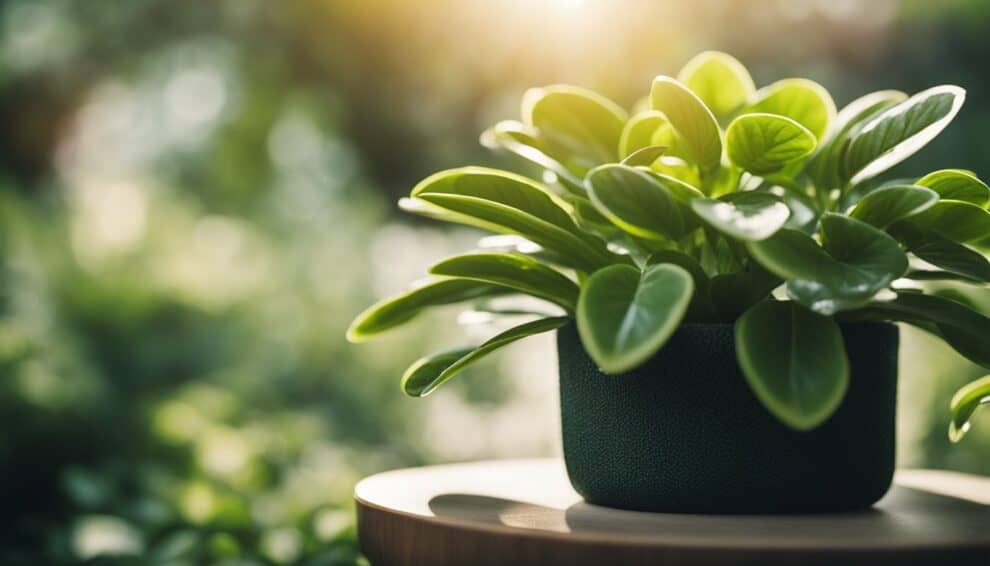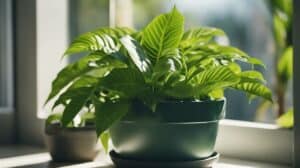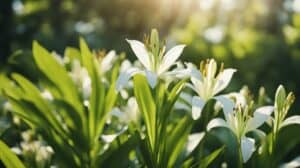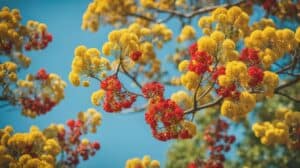Pincushion Peperomia, also known as Peperomia Ferreyrae, is a charming and easy-to-care-for plant that has gained popularity among indoor plant enthusiasts.
This small succulent plant is native to South America and is characterized by its cylindrical-shaped leaves that grow in a rosette pattern.
Its unique appearance and low-maintenance nature make it a favorite among plant lovers.

If you’re looking for a plant that is both attractive and easy to care for, Pincushion Peperomia might be the perfect choice for you.
With its compact size and ability to thrive in low-light conditions, it is an ideal plant for small spaces such as apartments and offices.
In this ultimate guide, you will learn everything you need to know to keep your Peperomia Ferreyrae healthy and happy, from the best soil and watering practices to how to propagate your plant.
Whether you’re a seasoned plant parent or a beginner, this guide will provide you with all the information you need to grow a thriving Pincushion Peperomia.
Getting to Know Pincushion Peperomia
Botanical Profile
Pincushion Peperomia (Peperomia ferreyrae) is a small, perennial plant that belongs to the Piperaceae family.
It is native to South America and is commonly found in Peru and Ecuador.
The plant has a unique appearance, with its leaves growing in a rosette pattern and its stems forming a compact, upright cluster.
The leaves are fleshy and succulent, and they are a light green color with a reddish tint on the edges.
Common Names
Pincushion Peperomia is also known by several other names, including Happy Bean, Pincushion Peperomia, and Emerald Ripple Peperomia.
The name “Happy Bean” comes from the plant’s small, bean-shaped leaves that resemble a happy face.
The name “Pincushion Peperomia” is derived from the plant’s unique appearance, with its upright stems resembling a pincushion.
“Emerald Ripple Peperomia” refers to the plant’s green, rippled leaves.
Origin and Habitat
Pincushion Peperomia is native to South America, specifically Peru and Ecuador.
It is commonly found growing in rocky areas and on cliffs, where it can withstand high temperatures and low humidity levels.
In its natural habitat, Pincushion Peperomia grows in well-draining soil and is often found growing alongside other succulent plants.
The plant is also commonly grown as a houseplant, as it is easy to care for and adds a touch of greenery to any indoor space.
Care Essentials

Peperomia Ferreyrae, also known as Pincushion Peperomia, is a unique and charming plant that can add a touch of greenery to any space.
To ensure that your Pincushion Peperomia thrives, there are a few care essentials to keep in mind.
Light Requirements
Pincushion Peperomia prefers bright, indirect light.
Direct sunlight can scorch its leaves, so it’s best to place it near a window that receives filtered light.
If you notice that your plant’s leaves are turning yellow or brown, it may be getting too much direct sunlight.
Watering Schedule
When it comes to watering, Pincushion Peperomia prefers to be on the drier side. Allow the top inch of soil to dry out before watering again.
Overwatering can lead to root rot, which can be fatal to the plant.
It’s important to note that Pincushion Peperomia is sensitive to fluoride and chlorine, so it’s best to use distilled or rainwater.
Soil Preferences
Pincushion Peperomia prefers well-draining soil that is rich in organic matter.
A mix of peat moss, perlite, and vermiculite can provide the ideal growing medium for this plant.
It’s important to avoid using heavy soils that retain too much moisture, as this can lead to root rot.
Temperature and Humidity
Pincushion Peperomia prefers warm temperatures between 65-80°F (18-27°C).
It can tolerate slightly cooler temperatures, but it’s important to avoid exposing it to temperatures below 50°F (10°C).
Pincushion Peperomia also prefers moderate to high humidity levels, so it’s a good idea to mist it regularly or place a humidifier nearby.
By following these care essentials, you can ensure that your Pincushion Peperomia thrives and adds a touch of greenery to your space.
Propagation Techniques

Stem Cuttings
Propagating Pincushion Peperomia from stem cuttings is a straightforward process. Begin by selecting a healthy stem with at least two leaves.
Using a sharp, sterile knife, make a clean cut just below a node. Remove the lower leaves, leaving only two or three at the top.
Dip the cut end into rooting hormone powder and plant it in a well-draining potting mix.
Water the cutting thoroughly and cover it with a plastic bag to create a humid environment. Place the pot in a bright, indirect light and keep the soil moist.
After a few weeks, the cutting should begin to root and new growth will appear.
Leaf Cuttings
Propagating Pincushion Peperomia from leaf cuttings is a bit more challenging but still doable.
Begin by selecting a healthy leaf and gently twist it off the stem. Cut the leaf into sections, making sure each section has a vein running through it.
Dip the cut end of each section into rooting hormone powder and plant it in a well-draining potting mix.
Water the cuttings thoroughly and cover them with a plastic bag to create a humid environment.
Place the pot in a bright, indirect light and keep the soil moist. After a few weeks, the cuttings should begin to root and new growth will appear.
Remember to be patient when propagating Pincushion Peperomia. It may take several weeks or even months for the cuttings to root and establish themselves.
In the meantime, keep the soil moist and provide the plant with bright, indirect light.
With a little care and attention, you’ll soon have a thriving Pincushion Peperomia collection.
Troubleshooting Common Issues

Peperomia Ferreyrae is a relatively easy plant to care for, but like any plant, it can experience problems.
Here are some common issues that may arise and how to troubleshoot them.
Pest Infestations
Pincushion Peperomia is relatively resistant to pests, but it can still be affected by them. The most common pests are spider mites and mealybugs.
Spider mites are tiny, red or brown, and can be found on the undersides of leaves. Mealybugs are small, white, and look like fluffy cotton balls.
They can be found on the stems and leaves.
To get rid of spider mites, you can spray the plant with a mixture of water and dish soap.
For mealybugs, use a cotton swab dipped in rubbing alcohol to remove them. You can also use neem oil or insecticidal soap to treat both pests.
Diseases
Peperomia Ferreyrae is relatively disease-resistant, but it can be affected by root rot and leaf spot.
Root rot is caused by overwatering and can be identified by yellowing leaves and a mushy stem.
Leaf spot is caused by fungal infections and can be identified by brown spots on the leaves.
To prevent root rot, make sure the soil is well-draining and avoid overwatering.
If root rot has already set in, you may need to repot the plant in fresh, well-draining soil.
To prevent leaf spot, avoid getting water on the leaves and make sure the plant has good air circulation.
If leaf spot has already set in, remove the affected leaves and treat the plant with a fungicide.
Environmental Stress
Peperomia Ferreyrae can be stressed by changes in temperature, light, and humidity.
If the plant is exposed to too much direct sunlight, the leaves may scorch and turn brown.
If the plant is exposed to too little light, the leaves may become pale and leggy.
If the plant is exposed to too much humidity, it may develop fungal infections.
To prevent environmental stress, make sure the plant is in a spot with bright, indirect light and has good air circulation.
Keep the soil moist but not waterlogged, and avoid exposing the plant to extreme temperatures.
If the plant is stressed, move it to a more suitable location and adjust the watering and humidity levels accordingly.
Frequently Asked Questions

How can I propagate Pincushion Peperomia effectively?
Propagating Peperomia Ferreyrae is relatively easy. You can propagate it through stem cuttings or leaf cuttings.
For stem cuttings, cut a stem with at least two leaves and place it in a potting mix with good drainage.
For leaf cuttings, cut a leaf from the stem and place it in a potting mix. Make sure to keep the soil moist and warm until roots appear.
What are the best practices for pruning a Peperomia Ferreyrae?
Pruning Pincushion Peperomia is essential to keep it healthy and bushy.
You can prune it by cutting off the stems that have grown too tall or have become leggy. You can also remove any yellow or dead leaves.
Make sure to use clean and sharp pruning shears to avoid damaging the plant.
Does the Peperomia Ferreyrae bloom, and how can I encourage it?
Peperomia Ferreyrae does bloom, but the flowers are insignificant and not very showy.
To encourage blooming, you can provide the plant with bright, indirect light and keep it in a warm and humid environment.
Why is my Pincushion Peperomia becoming leggy, and how do I fix it?
Pincushion Peperomia becomes leggy when it doesn’t receive enough light or when the soil is too wet.
To fix it, move the plant to a brighter spot or reduce watering. You can also prune the leggy stems to encourage bushier growth.
What should I do if my Happy Bean plant is dropping leaves?
If your Happy Bean plant is dropping leaves, it may be due to overwatering or underwatering.
Check the soil moisture and adjust your watering schedule accordingly. You can also check for pests or diseases that may be causing the leaf drop.
What are the ideal conditions for a thriving Peperomia Ferreyrae?
Peperomia Ferreyrae thrives in bright, indirect light and well-draining soil. It prefers slightly moist soil and high humidity.
Keep the plant away from direct sunlight and drafts. The ideal temperature range is between 60°F and 80°F.














